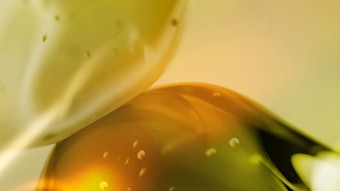The introduction of gas chromatography (GC) has opened new avenues for the analysis of complex mixtures in many classes of natural products. The value of this technique for the separation and identification of terpenes from essential oils was recognized a good twenty years ago. Among the earliest applications in this field were those on coniferous oils. Since then GC of terpenes has substantially improved, and the interest of workers in several disciplines for the analysis of terpenes and related compounds in Coniferae has greatly increased. Thus, terpene composition in conifers has been used successfully in genetic and chemosystematic studies as well as for work on insect attractiveness or repellency and animal damage. The majority of these studies were carried out with oils obtained after steam distillation of the plant material. However, the influence of this method of isolation upon the composition of the coniferous oils is only seldom considered.
Probably the first investigation of this kind in the field of coniferous oils was published by Von Rudloff, who compared different isolation procedures (three steam distillation techniques and single needle injection) for leaf oil of white spruce, Picea glauca (Moench) Voss. The author concluded that large scale distillation resulted in the loss of monoterpene hydrocarbons. Sakai and coworkers presumed that many trace components in the needle oil of Douglas fir (Pseudotsuga menziesii [Mirb.] Franco) were artefacts arising from isolation and processing of the oil, without giving details. Some years later Pauly and coworkers examined the leaf oil from Pinus pinaster Ait. It was reported that monoterpene alcohols (mainly α-terpineol and Iinalool) seemed to be formed during distillation because solvent extracts were devoid of these compounds. which was attributed to the acidity of the distillation water. Von Rudloff and Hunt compared steam distilled oil from Abies amabilis (Dougl.) Forbes with the volatile portions of pentane extracts but no changes were observerved. In a similar comparison on Pinus monticola Dougl. (western white pine), Hunt and Von Rudloff recorded differences in the levels of elemol vs cadinol isomers. The authors stated that “it appears that enzymatic or catalytic action during steam distillation increases the amounts of cadinols at the expense of elemol.” In contrast, the formation of elemol (and its acetate) as a result of distillation was reported by Von Rudloff in a chemosystematic study on several juniper species. Hörster encountered an artefact in the monoterpene fraction of Juniperus oxycedrus L. The compound, tetradecane, was derived from the petroleum ether used to trap the oil during distillation. So strictly speaking this is not an artefact of distillation.










